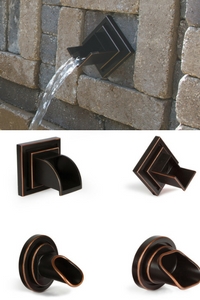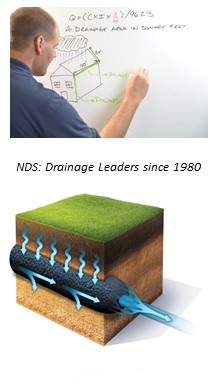|
|
|
Monthly Professionals Update
|
February 2018
|
|
|
|
|
 What's the fastest way to grow your profits in 2018? What's the fastest way to grow your profits in 2018?
Sell upgrades with every project.
Why sell upgrades?
Your buyers have more money to spend. Many times, they don't know where to spend it. Your job is to make sure that your customer understands what options make the best sense.
Plan ahead.
Know what upgrades you want to sell and their installed prices. Get your presentation into a form where it is easy to include with your regular quote.
Customers want to be sold.
Buyers are often uncertain of what they need, what's appropriate and what others are buying. Be prepared to talk about what you are offering confidently.
Selling upgrades is a wise use of time.
For example, if it takes a salesperson an extra 15 minutes to sell a $250 upgrade that costs the company $100, he's just earned the equivalent of $600/hour for the time invested.
Increase customer satisfaction while growing your bottom line. Learn how to sell more upgrades at our upcoming events.
The Team at CPS Distributors
|
|
CPS offers a special luncheon on business excellence and planning your vision for the future.
The event will be facilitated by Lowell Kaufhold and Jesse Bezdek of CPS sharing how to prepare your business for a prosperous future.
This year's event we have two guest speakers: Jeffrey Scottwill discuss "7 Time Management Secrets of Top Performers."
Our Keynote Speaker is former Denver Bronco, Steve Watson. His keynote "The Underdog Story, Making Strong Impressions at OTA's"
The cost $35.00 per person Sign up now to reserve your seat at this special event!
|
Plan ahead to maximize your 2018 season. Having a great year starts with attending CPS Spring Fling, the region's best event for professionals.
Spring Fling will be held at The Denver Mart, located at I-25 and 58th Avenue.
Mark your calendars for Thursday, March 8, 2018.
Click Here to Learn More about Spring Fling Register Here
|
 See CPS at ProGreen Expo See CPS at ProGreen Expo
Mark your calendar to attend: February 12th - 16th (Trade Show - February 14th - 16th)
Don't miss Colorado's premier trade show for professionals. The CPS team will be there, so stop by our booth and say hello.
Use the voucher below for FREE entry to the show floor. Just click to view in a new browser window and print it. Bring to a kiosk at show registration to enter the payment code provided.
|
 Please join the HydroPoint and CPS teams to dive deep into the world of WeatherTRAK and how it fits into the realm of Smart Controllers.
Pick from 3 different sessions to best suit your current experience. From beginner to advanced covering everything from programing, increasing sales, alerts and reporting tools.
Cost $35.00 per person.
Register here.
|
Installs Anywhere. Even Underwater
The ESP-9V's waterproof case and dual-sealed battery chamber ensure long life even when installed in a wet, muddy valve box. In harsh environment testing the ESP-9V outlasted the competition by 70%. After being submerged in water at alternating extreme hot and cold temperatures the ESP-9V was still going strong after the competition failed in less than two days.
Easier to Program
Common programming features are easily accessed on one screen, making programming quick and easy. The LCD screen is 85% larger than the Hunter® Node and the programming icons are big and easy to understand. Manual watering is easy with a dedicated button.
|

Following the tremendous response to their solid brass wall Spouts, Atlantic is introducing three new models for 2018. The Wall Spouts are one of the most popular options in the Atlantic Formal Spillways system, which adds decorative spillways and water features to the outdoor living area, along with easy-to-install basins and reservoirs. A hit with designers and contractors in landscape, hardscape and pool, Wall Spouts easily mount to any wall, existing or under construction, adding classic European charm to any installation. At the base of the wall, one of three simple Basin Kits provides pump, plumbing and fittings to quickly create single or multiple recirculating Spout installations.
Wall Spouts all share heavy, corrosion-resistant, solid brass construction, with integrated drip edge, 1-1/2" female thread inlet and grounding lug. New for 2018 are three new profiles: The oval Olivett and diamond Verona styles complement the round Ravenna Spout, which now features a round wall plate, and the square Mantova style, which is unchanged from 2017. Unique to Atlantic, the water flowing out of the Spouts can be illuminated from within by innovative Spout Lights, which plumb into the tee supplying the Spout, and feature either Color Changing or Warm White LEDs. Available first quarter 2018.
|
|
3 Easy Steps to Calculate Landscape Drainage Needs
 By following the steps outlined in this article, you will be able to determine the amount of water draining from your customer's property and ways that this water can be efficiently stored. By following the steps outlined in this article, you will be able to determine the amount of water draining from your customer's property and ways that this water can be efficiently stored.
Step 1: Calculate Stormwater Runoff using the Rational Method: Q = C x I x A where
- Q = Storm Water Runoff (in cubic feet per second)
- C = Coefficient of Runoff
- I = Rainfall Intensity (in inches per hour)
- A = Area of Drainage Zone (in acres)
Draw a sketch of the customer's yard to gather the area measurements. Examine the property to determine where and how much water is draining.
Step 2: Calculate the volume of water being stored
Each municipality has their specific rules when it comes to determining how much water can be drained off of a property. A method that is commonly used is called the First Flush rule (check your local codes).
The First Flush rule states that the first 15 minutes (or other duration determined by your municipality) of water from a storm must be stored on your property. Any water after that first 15 minutes can be discharged off your property.
Step 3: Determine how to store runoff
There are two ways that this water can be stored: 1) above ground in retention and detention ponds and 2) Below ground in dry wells, french drains, etc.
The
NDS Flo-Well
and
Ezflow
are two products that can help you efficiently store your runoff.
Click
here for a complete step by step guide on How to Calculate Drainage.
In a six part video series, NDS' resident civil engineer, Dr. Drainage, walks you through how to calculate runoff, store runoff, size a catch basin and determine what drain pipe to use. Click
here to view the entire series.
In addition to these videos, NDS has created a series of
online calculators that make it easy for contractors to plug in information from their job site and it helps you calculate drainage for your customer's dry well, French drain, and drain pipe.
|
|
Printable Troubleshooting Guide to Carry with You
 Even with the most advanced irrigation installations, there will be times when controllers, system wiring or valves can fail to operate, causing water not to flow to the sprinkler heads. Even with the most advanced irrigation installations, there will be times when controllers, system wiring or valves can fail to operate, causing water not to flow to the sprinkler heads.
Thanks to Regency Wire, we're offering a free PDF article that covers the steps to troubleshooting common electrical problems in irrigation systems.
Click the link to read the article. Print a copy to carry with you!
|
|
Pressure Reducing Valves Increase Landscape Watering Efficiency

Improving the efficiency of an outdoor irrigation system is an important factor in water conservation.
Many existing lawn sprinkler systems are operating at water pressures exceeding pressures recommended by sprinkler manufacturers. Higher operating pressures create system inefficiencies due to excessive flow rates, misting, uneven coverage and water waste when watering areas outside the landscaping. Lower water pressures generate appropriate water droplet size from the spray heads and provide a more uniform distribution of water across the landscape increasing the irrigation system's performance.
The most straight forward method of lowering water pressure to an irrigation system is accomplished by adding a single
water pressure reducing valve (PRV) at the point of connection (POC) to the irrigation system. The single PRV installed along the POC line will regulate variable high inlet water pressures to a constant lower optimal water pressure for the entire irrigation system. This allows the installed spray heads and drip emitters to operate in their recommended high efficiency pressure range. Increased water efficiency will be immediately realized by the irrigation system with this one change. Therefore, irrigation systems that experience high inlet pressures would realize significant water savings when designed or retrofitted with a PRV installed along the POC to the mainline. This technique for lowering water pressure to an irrigation system is common practice for both landscape irrigation designers and landscape contractors.
|
|
| |
|
|